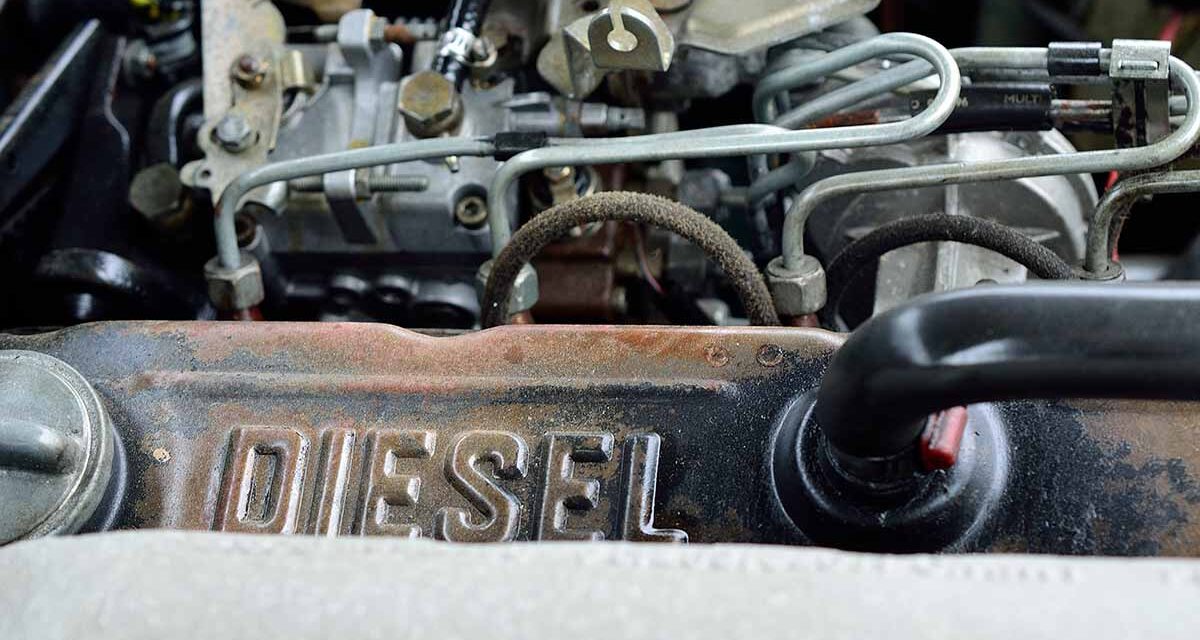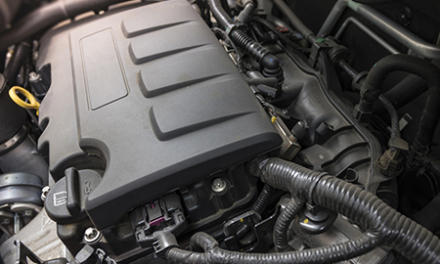Unlike gasoline engines that use port injection to spray fuel into the intake manifold just before the intake stroke, diesel engines squirt high-pressure fuel directly into the engine’s cylinders. This occurs at the top of the compression stroke and both initiate and control the combustion, doing the same work as both the ignition system and the throttle in a gasoline engine.
With all the considerations involved–heat, pressure, and distributing the fuel mist evenly–it’s no wonder that the injector is the most complicated component of a diesel engine. The good news is that with no separate ignition system, that’s one less thing that can go wrong compared to a gasoline engine’s fuel system. Plus, with no manifold, it’s a much cleaner setup.
These days, two variants are generally used in diesel vehicles: the unit injector and the common rail.
Unit Injector
This system combines the injector nozzle with the injection pump in one compact component that is cooled and lubricated by the fuel itself. In this process, low-pressure fuel feeds into the fuel ducts of the cylinder head and, if the solenoid valve is open, into the injector’s duct. As the pump plunger descends, the solenoid valve and fuel line close and the trapped fuel is compressed. Once the pressure rises above a particular “opening” pressure, the injector nozzle needle rises so that fuel can be sprayed into the combustion chamber. Finally, the plunger completes its descent, the solenoid and fuel valve are re-opened, and fuel enters the duct. This drops the pressure inside, which shuts the injector nozzle.
Unit injector systems are usually found in large commercial vehicles and in passenger vehicles made by Volkswagen Group and Land Rover.
Common Rail
In this setup, fuel flows from the tank to the common header (also known as the accumulator), then to the injectors to be sprayed into the combustion chamber. The header uses a relief valve to maintain proper pressure and send extra fuel back to the tank. The injection time and quantity are controlled precisely by piezoelectric valves. The name “common rail” comes from the common fuel rail that stores fuel at extremely high pressures (up to 29,000 psi) and feeds the fuel to several fuel injectors.
Common rail systems are found in most other diesel passenger cars worldwide.



![[Vehicle Fitment-1]: Compatible with Lexus GX460 2010-2022 V8 4.6L, LX570 2008-2011 V8 5.7L, LX570 2013-2021 V8 5.7L; Compatible with Toyota Land Cruiser 2008-2011/2013-2021 V8 5.7L, Sequoia 2010/2012 V8 4.6L, Sequoia 2010-2011 V8 4.7L, Sequoia 2008-...](https://m.media-amazon.com/images/I/41kf4wi1OOL._SL100_.jpg)





![[OE Auto Parts] - 55565970 OE 1.4L fuel injectors sold by Pjvmvo are OE parts.We use VIN matching to ensure the integrity of our inventory and accuracy of product descriptions.Offer high quality, and long-lasting performance. [Fitment] - 1.4L Turbo C...](https://m.media-amazon.com/images/I/41CP6npMFOL._SL100_.jpg)
![[OE Auto Parts] - 35310-2E000 OE 1.8L fuel injectors sold by Pjvmvo are OE parts. We use VIN matching to ensure the integrity of our inventory and accuracy of product descriptions. [Fitment] - 1.8L Elantra & Forte Fuel injectors, Please use "amazon c...](https://m.media-amazon.com/images/I/51JYtJxDvRL._SL100_.jpg)



![🚙[FITMENT]: Electrical Fuel Pump Module Assembly 2004 2005 2006 for Nissan Altima 2.5L/3.5L; 2004 2005 2006 2007 2008 for Nissan Maxima 3.5L ; 2004 2005 2006 2007 2008 2009 for Nissan Quest 3.5L fuel pump. 🚙[WHAT YOU GET]: One set of Electric Fuel Pu...](https://m.media-amazon.com/images/I/41xQcU9qF8L._SL100_.jpg)
I never knew that diesel engines have not a separate ignition system! One of my college professors was talking about diesel and its importance so I decided to do some extra research on my own because I am very curious as to how it works. In my opinion, you should always make sure to have the correct materials and tools to deal with engines and automotive.
This is not correct I have owned some early Mercedes diesels that had pre-chamber injection sytems
they were w201 190d & 190d 2.5 & w124 300d they were a bit sluggish but absolutely reliable unlike todays
overly complex electronic offerings